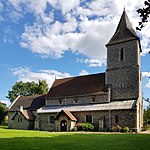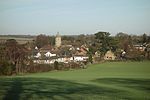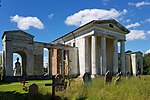Devil's Dyke, Hertfordshire
Ancient dikesArchaeological sites in HertfordshireFormer populated places in HertfordshireHistory of HertfordshireIron Age sites in England ... and 3 more
Linear earthworksScheduled monuments in HertfordshireUse Oxford spelling from August 2017

Devil's Dyke is the remains of a prehistoric defensive ditch which lies at the east side of the village of Wheathampstead, Hertfordshire, England. It is protected as a Scheduled Monument. It is generally agreed to have been part of the defences of an Iron Age settlement belonging to the Catuvellauni tribe of Ancient Britain. It has possible associations with Julius Caesar's second invasion of Britain (54 BC)
Excerpt from the Wikipedia article Devil's Dyke, Hertfordshire (License: CC BY-SA 3.0, Authors, Images).Devil's Dyke, Hertfordshire
Caesars Road, St Albans
Geographical coordinates (GPS) Address External links Nearby Places Show on map
Geographical coordinates (GPS)
| Latitude | Longitude |
|---|---|
| N 51.80673 ° | E -0.28555 ° |
Address
Devil's Dyke
Caesars Road
AL4 8NX St Albans
England, United Kingdom
Open on Google Maps










